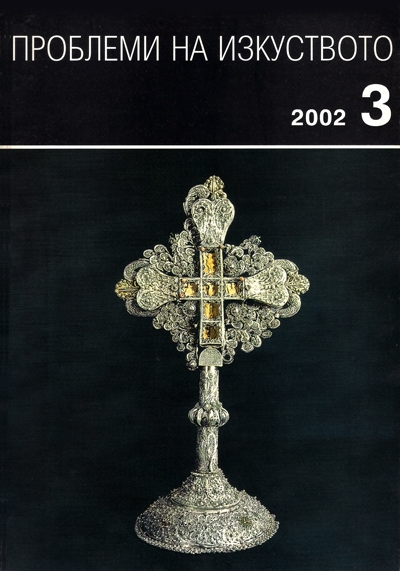За функцията на два раннохристиянски паметника от Историческия музей в Оряхово
On the Function of Two Early-Christian Monuments from the Historical Museum in Oriahovo
Author(s): Vania Popova-MorosSubject(s): Christian Theology and Religion, History, Archaeology, Fine Arts / Performing Arts, Cultural history, Visual Arts, Theology and Religion
Published by: Институт за изследване на изкуствата, Българска академия на науките
Summary/Abstract: A marble cross of the Latin type was discovered by chance in 1981 in the locality of Kapitanitsa, near the village of Leskovets, Oriahovo district, now kept in the Historical Museum there, No 2560; with dimensions 59 x 36 cm; made of white marble. It represents the True Cross, made of an ancient oak tree, which all of a sudden came into leaf with two branches. The masterpiece reveals an antique sense of volume, the essence of difference surfaces, and the organic asymmetry of nature. Such types of crosses are not met in the Early Christian period in Bulgaria, and rare parallels come from Carthage -probably from a baptisterium, and have a liturgical function. The same purpose is assumed in the article and it is also considered that this type of crossed reflects the West Roman liturgy at the end of the IV - beginning of the V century, in the western part of the Lower Danube (from the line Oriahovo - Storgosis westwards), together with the Latin mosaic inscription of Basilica No 1 from Storgosia, part of the Western liturgy, and gold glass fragments from the necropolis also there. The cross was probably plased in front of the bema or aside in the eastern part of the Good Shepherd, coming from the village of Selanovtsy, Oriahovo district, published long ago and included among the Exhibition monuments of the Christian Art in Bulgaria, in 2001, in Rome. In the Catalogue the statue is considered to be from the tetrarchy. In our article the date is later, about the middle of the V century, according to the stylistic features (eyes, curls, tunic, pose). The hole on the tope of the statue (the capital-like top) is probably intended for a stand and so the whole statue was a candlestick or a leg of a table or decoration of fountain. Both monuments reflect the earlier phase of official Christian art of IV - beginning of the V century, when plastic values and marble were still very widely used in liturgical objects and implements, and during the V-VI centuries they were replaced definitely by metal ones almost entirely, and the ancient plasticity disappeared too.
Journal: Проблеми на изкуството
- Issue Year: 2002
- Issue No: 3
- Page Range: 19-24
- Page Count: 6
- Language: Bulgarian
- Content File-PDF

